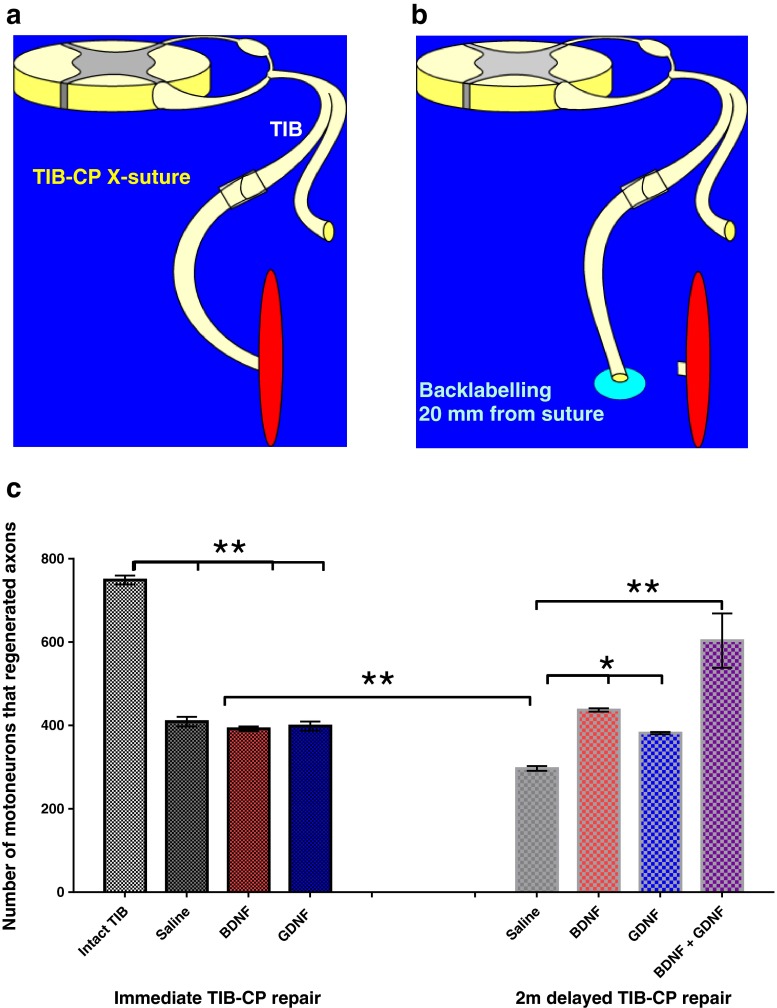Fig. 9.
Exogenous administration of the neurotrophic factors brain-derived neurotrophic factor (BDNF) and glial cell-line derived neurotrophic factor (GDNF) promotes neuronal regeneration of injured motoneurons after delayed nerve repair. (a) A cross-suture (X-suture) technique to cross-suture the freshly cut tibial (TIB) proximal nerve stump to the distal stump of the freshly cut common peroneal (CP) nerve or to cross-suture the TIB proximal nerve stump that was ligated for 2 months (2 m) previously (to prolong TIB motoneuron axotomy) to a freshly cut CP distal nerve stump. The neurotrophic factors were delivered from a miniosmotic pump to the coaptation site over a 1-month period. (b) Thereafter, the regenerated TIB axons in the CP nerve were exposed to fluorogold to backlabel those TIB motoneurons that regenerated their axons over a 20-mm distance. (c) Saline-treated axons regenerated ~45 % of their axons within the a month of regeneration, consistent with the staggered regeneration demonstrated by Al-Majed et al. [6]. This regeneration was significantly reduced by a 2-month period of chronic axotomy consistent with the data of Fu and Gordon [17]. The decline in motoneuron numbers after 2 months was not only prevented by a month of administration of BDNF (2 μg/day) or GDNF (0.1 μg/day), but also the neurotrophic factors significantly increased the numbers of 2-month chronically axotomized motoneurons that regenerated their axons (* p < 0.05; ** p < 0.01)

